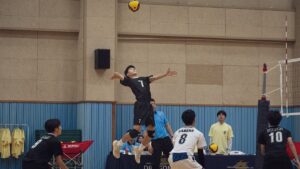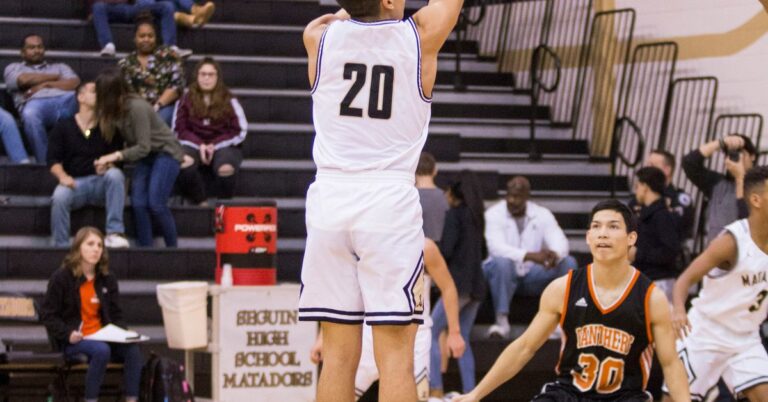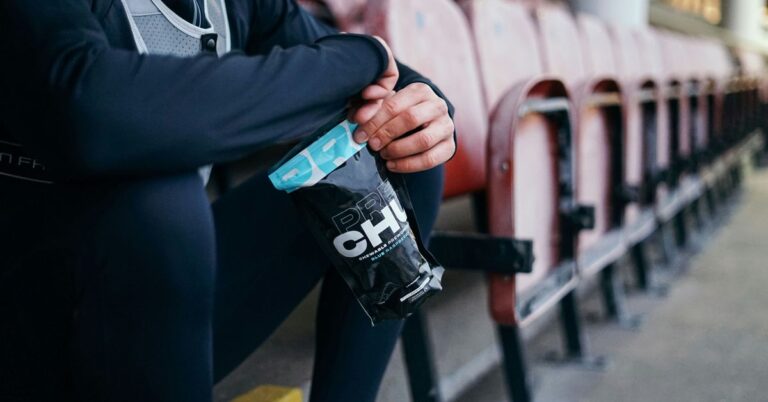Unlock the Proven Techniques Elite Athletes Use for Sports-Specific Conditioning
Have you ever wondered how elite athletes manage to perform at such astonishing levels? It’s not just raw talent or sheer determination that sets them apart; it’s their rigorous and specialized conditioning programs. As someone who’s been covering sports for years and has had the pleasure of speaking with countless athletes and coaches, I can tell you that the world of sports-specific conditioning is a fascinating blend of science and art. So, let’s dive into the techniques that truly make a difference in the training regimens of the best in the business.
Understanding Sports-Specific Conditioning
Before we unpack the various techniques, it’s essential to grasp what sports-specific conditioning actually means. Unlike general fitness training, which might focus on overall strength or endurance, sports-specific conditioning zeroes in on the particular physical demands of a sport. This means developing those attributes that will enhance performance in a given sport while reducing the risk of injury.
For instance, a sprinter’s training regimen is going to look vastly different from that of a marathon runner. The sprinter needs explosive strength and speed, whereas the marathoner requires endurance and stamina. This distinction is where the magic happens—by tailoring training to the specific needs of the sport, athletes can achieve peak performance.
The Science Behind Conditioning Techniques
One of the most compelling aspects of sports-specific conditioning is its foundation in exercise science. Many elite athletes work closely with sports scientists and trainers who utilize data to create personalized programs. It’s a bit like being a chef in a kitchen, but instead of ingredients, you have variables like muscle groups, energy systems, and biomechanics.
Let’s break down some key components:
- Biomechanics: This involves studying the mechanics of human movement. Understanding how an athlete moves allows trainers to identify areas for improvement and develop drills that enhance efficiency.
- Energy Systems: There are three primary energy systems used during exercise: the ATP-PC system for short bursts of energy, the glycolytic system for moderate efforts, and the oxidative system for endurance. Elite athletes train these systems differently based on the demands of their sport.
- Physiology: Knowledge of muscle fiber types—slow-twitch versus fast-twitch—helps in tailoring workouts. Sprinters, for instance, often have a higher proportion of fast-twitch fibers, while endurance athletes benefit from more slow-twitch fibers.
It’s fascinating how science and sports intertwine, isn’t it? (It’s like watching a gripping thriller unfold, except with fewer plot twists—and usually more sweat.) Understanding these components allows athletes to train smarter, not just harder.
Key Techniques Used by Elite Athletes
Now, let’s dig into some of the proven techniques that elite athletes employ in their conditioning routines. Think of these as the secret sauce that can elevate an athlete from good to great.
1. Plyometrics
Plyometrics, often referred to as “jump training,” is a method that enhances explosive power and speed. It combines strength and speed to produce powerful movements. For example, box jumps, depth jumps, and burpees are all forms of plyometric exercises that elite athletes incorporate into their routines.
Take basketball players, for instance. Their ability to leap and dunk is not solely reliant on strength; they also need explosive speed. Plyometric drills help improve their vertical leap, allowing them to reach new heights—literally. I remember chatting with a basketball coach who swore by plyometrics; he mentioned how his players seemed to defy gravity after a solid training session.
2. Sport-Specific Drills
It may sound obvious, but many athletes overlook the importance of practicing the specific skills of their sport in a training setting. A soccer player, for instance, spends hours dribbling, passing, and shooting under various conditions. This isn’t just about skill; it’s about conditioning the body to perform these movements under fatigue.
Coaches often design drills that mimic game scenarios. For example, a basketball drill might involve sprinting to a spot on the court, performing a jump shot, and then sprinting back. This emulates the stop-and-start nature of a real game, ensuring that the athlete’s body is conditioned to handle game-like intensity.
3. Resistance Training
Resistance training, when done correctly, can greatly enhance an athlete’s performance. The key is to incorporate movements that are specific to the sport. Olympic weightlifting, for example, is popular among athletes across various sports because it develops explosive power.
However, not all resistance training is created equal. A football lineman may focus on different muscle groups than a gymnast. The lineman’s regimen might include heavy squats and bench presses, while the gymnast may prioritize bodyweight exercises that promote strength and flexibility. It’s about finding what works for the individual athlete.
4. Endurance Training
While explosive power is crucial, endurance cannot be overlooked. Many sports require athletes to maintain a certain level of intensity for extended periods. Take long-distance runners who incorporate tempo runs and interval training to build stamina and speed. This type of training pushes the body’s limits while teaching it to recover quickly.
Interestingly, some research suggests that endurance training can also benefit strength athletes. For instance, Olympic lifters can enhance their recovery times and overall performance through carefully structured endurance sessions. It’s all about balance.
5. Mobility and Flexibility Work
Injuries are an athlete’s worst enemy, and a robust mobility and flexibility routine can significantly reduce the risk. Elite athletes often incorporate yoga or dynamic stretching into their conditioning programs. Not only does this improve range of motion, but it also promotes relaxation and mental focus.
In my conversations with athletes, many have shared how they initially viewed stretching as a “fluff” exercise. But after experiencing injuries or tightness, they quickly learned its value. As one seasoned athlete put it, “If I had known how important flexibility was, I would’ve started doing yoga years ago!”
Periodization: The Key to Longevity
Let’s not gloss over periodization—a term that might sound intimidating but is crucial in the world of sports conditioning. Essentially, periodization is the planned variation in training intensity and volume over time. The idea is to peak at the right moment, usually during competitions.
Most elite athletes work with coaches who develop a periodized training plan that consists of different phases:
- Preparation Phase: This phase focuses on building a strong foundation through general conditioning and strength training.
- Competition Phase: Here, the focus shifts to sport-specific skills and tapering training volume to ensure peak performance during competitions.
- Transition Phase: This is often overlooked but is equally important. It allows athletes to recover and recharge before beginning the next cycle.
The beauty of periodization lies in its flexibility. Coaches can adjust the plan based on an athlete’s performance, recovery, and any unforeseen circumstances (like the occasional sprained ankle). It’s like crafting a fine wine—there’s an art to it.
Recovery: The Unsung Hero of Conditioning
Speaking of unforeseen circumstances, recovery is often the unsung hero in the world of sports conditioning. Athletes push their bodies to the limit, but without proper recovery, all that hard work can lead to burnout and injuries.
Elite athletes employ various recovery techniques, such as:
- Active Recovery: Low-intensity workouts help flush out lactic acid and promote blood flow.
- Cold Water Immersion: Often referred to as ice baths, these can reduce inflammation and speed up recovery.
- Massage Therapy: Many athletes swear by regular massages to reduce muscle tension and improve circulation.
- Sleep: It’s often said that sleep is the most underrated aspect of recovery. Quality sleep is essential for muscle repair and overall health.
As someone who has seen firsthand the toll that rigorous training can take, I can’t stress enough how important recovery is. I remember interviewing a professional cyclist who emphasized that his success was largely due to his recovery routine. “If you don’t recover, you can’t perform,” he said, and I couldn’t agree more.
The Role of Nutrition in Conditioning
No discussion of conditioning would be complete without touching on nutrition. The right fuel is crucial for optimizing performance and recovery. Elite athletes often work with nutritionists to develop meal plans that align with their training regimens.
Consider this: an athlete’s body is like a finely tuned machine. Just as a car needs the right type of fuel to run smoothly, so too does the human body. Carbohydrates, proteins, and fats all play vital roles in performance. Carbs provide energy, proteins aid in muscle repair, and fats are essential for hormone production.
Moreover, hydration cannot be overlooked. Dehydration can lead to decreased performance and increased injury risk. Many athletes have hydration strategies that include electrolyte replacement during intense training sessions.
Conclusion: Crafting Your Own Conditioning Plan
So, what can we take away from the elite athletes’ playbook on sports-specific conditioning? It’s clear that a multifaceted approach is key. From plyometrics to nutrition, every element plays a role in an athlete’s success. While you may not be training for the Olympics, there are valuable lessons here for anyone seeking to improve their performance in any sport.
As you think about your own conditioning, consider the following:
- Identify your sport’s specific demands and tailor your training accordingly.
- Incorporate a variety of techniques, including strength, endurance, and flexibility training.
- Don’t underestimate the importance of recovery—embrace it as part of your routine.
- Fuel your body with the right nutrition, and hydrate like your performance depends on it (because it does!).
Ultimately, the journey of an athlete—whether elite or aspiring—is a continuous process of growth, learning, and adaptation. By unlocking these proven techniques, you can elevate your training to new heights. Who knows? You might just surprise yourself with what you can achieve. After all, as one famous athlete once said, “The only limits that exist are the ones you place on yourself.” Now go out there and get after it!













